Richmond Standard: Richmond Art Center seeks applicants for artist residency, board
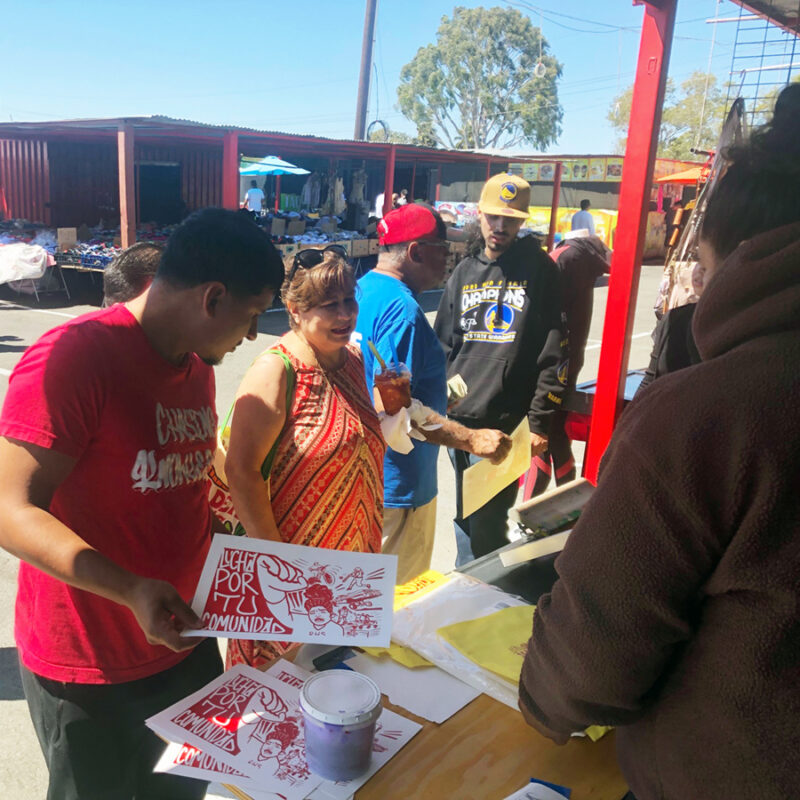
Web link: https://richmondstandard.com/richmond/2024/04/30/richmond-art-center-seeks-applicants-for-artist-residency-board/ Richmond Art Center seeks applicants for artist residency, board By Kathy Chouteau The Richmond Art Center (RAC) is offering opportunities for a residency for one special artist and board positions for those wishing to support local art. The Richmond Artist Residency enables an “emerging or mid-career artist to pursue their creative work, while also […]
Richmond Standard: WCCUSD Student Art Show poised to bloom at Richmond Art Center
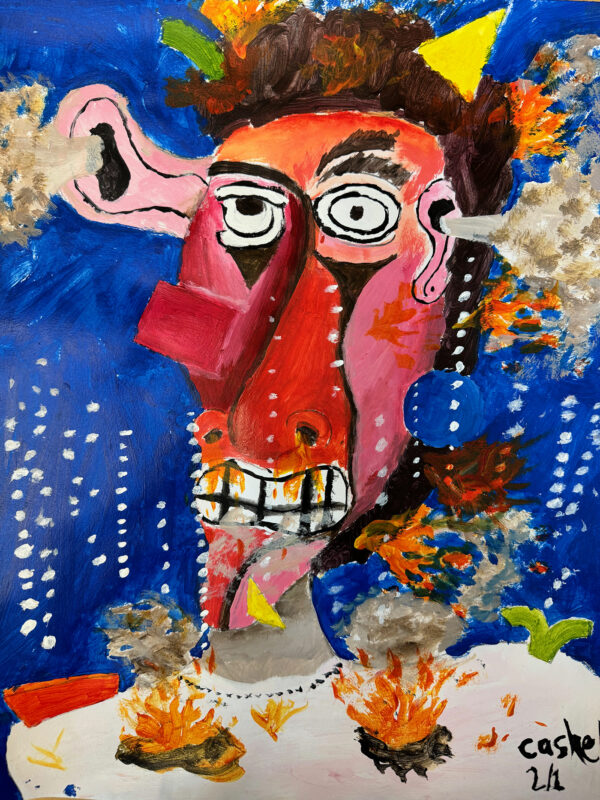
Weblink: https://richmondstandard.com/richmond/2024/03/27/wccusd-student-art-show-poised-to-bloom-at-richmond-art-center/ WCCUSD Student Art Show poised to bloom at Richmond Art Center By Kathy Chouteau Three spring exhibitions are readying to debut Wednesday, April 10 at the Richmond Art Center (RAC), including the 58th Annual WCCUSD Student Art Show, Home Show and Art Blooms Here. The exhibitions will run through May 18. “Spring exhibitions at the Richmond Art […]
Richmond Confidential: Richmond Art Center recovering after losing major donor: ‘We are in the black now, not red.’
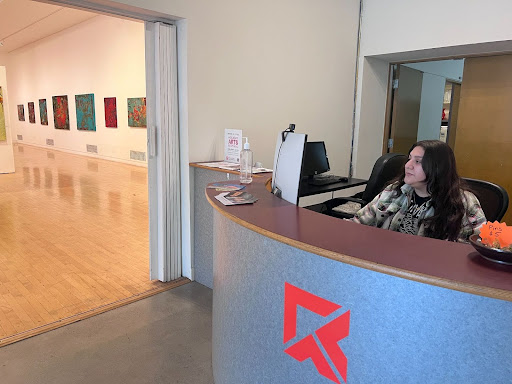
Richmond Confidential Weblink: https://richmondconfidential.org/2024/01/16/richmond-art-center-budget-reaching-goal/ Richmond Art Center recovering after losing major donor: ‘We are in the black now, not red.’ Sophia Sun on January 16, 2024 When the Richmond Art Center lost its biggest donor last year, Executive Director José Rivera said he was worried about the future. “Over many years, that donor contributed $100,00 annually, […]
Richmond Confidential: ‘This is like our Harlem Renaissance’: Exhibition showcasing Black artists set to open in Richmond
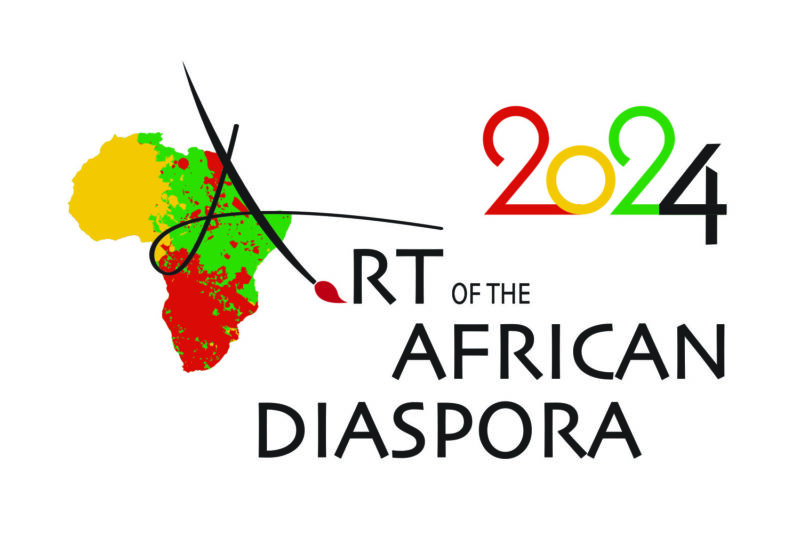
Richmond Confidential Weblink: https://richmondconfidential.org/2024/01/02/richmond-art-african-diaspora-exhibition/ ‘This is like our Harlem Renaissance’: Exhibition showcasing Black artists set to open in Richmond Panashe Matemba-Mutasa on January 2, 2024 In an arena where they’re often in the shadows, Black artists are creating spaces to recognize and celebrate their talent. For the 28th year, the Richmond Art Center will present the […]
Richmond Standard: RAC celebrates Indigenous Peoples’ Day through artmaking
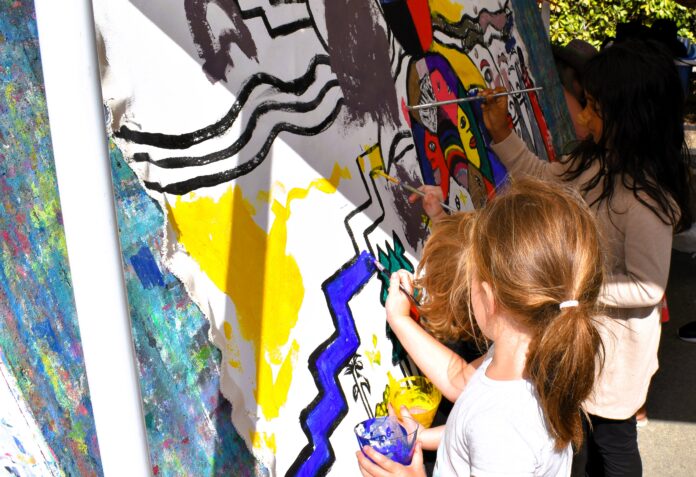
Richmond Standard Weblink: https://richmondstandard.com/richmond/2023/10/09/rac-celebrates-indigenous-peoples-day-through-artmarking/ RAC celebrates Indigenous Peoples’ Day through artmaking October 9, 2023 By Mike Kinney Dozens of community members and their families celebrated Indigenous Peoples’ Day through artmaking at the Richmond Art Center on Saturday. It was part of the art center’s annual “Fall Family Day,” a fun, free event that invited the […]
Wee Poets Features WCCUSD Youth and Richmond Art Center
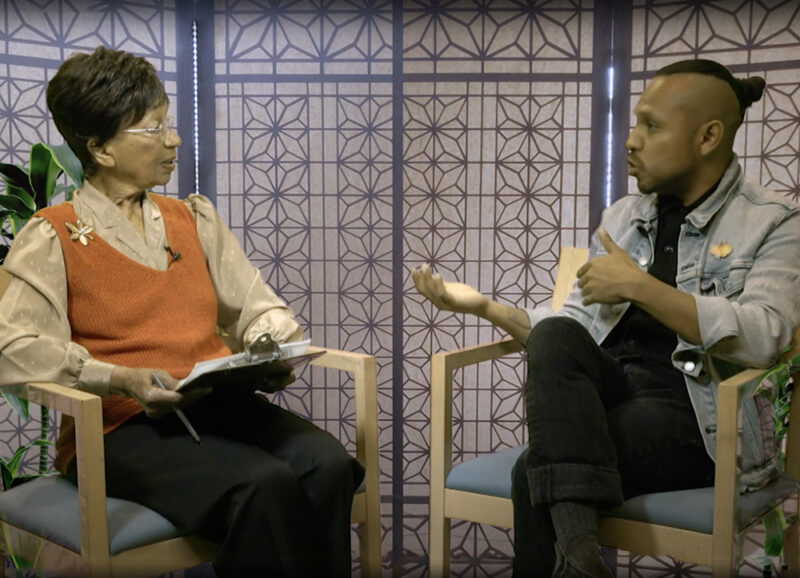
Wee Poets Features WCCUSD Youth and Richmond Art Center For over thirty years Wee Poets on Channel 28 has supported literacy development through interviews with thousands of Bay Area children. This month three WCCUSD students and Roberto Martinez, RAC’s exhibitions director, were invited onto the show to talk about the WCCUSD Student Art Show. Top […]
The Richmond Standard: Richmond mayor’s office also an art gallery
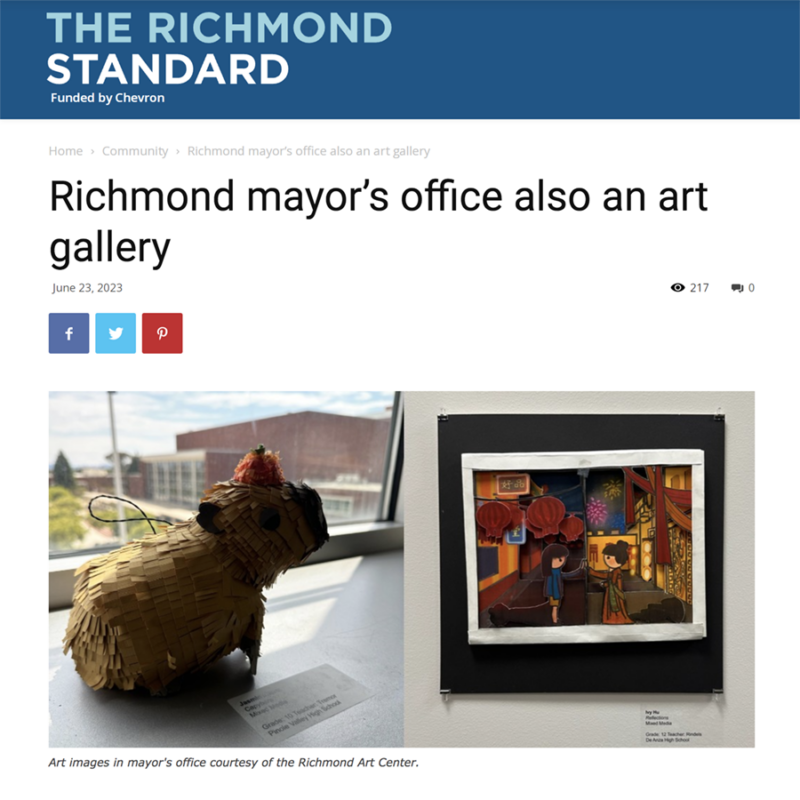
Link: https://richmondstandard.com/community/2023/06/23/richmond-mayors-office-also-an-art-gallery/ The Richmond Standard Richmond mayor’s office also an art gallery June 23, 2023 After a four years, works from locally-based NIAD Art Center are being exhibited on rotation at the office located at Richmond Civic Center, according to Mayor Eduardo Martinez. The mayor’s office also partnered with the Richmond Art Center to display […]
Artnet News: Chevron Took Down an Artwork, Which Called Out the Oil Giant for Polluting a California City, From a Fence Surrounding Its Refinery
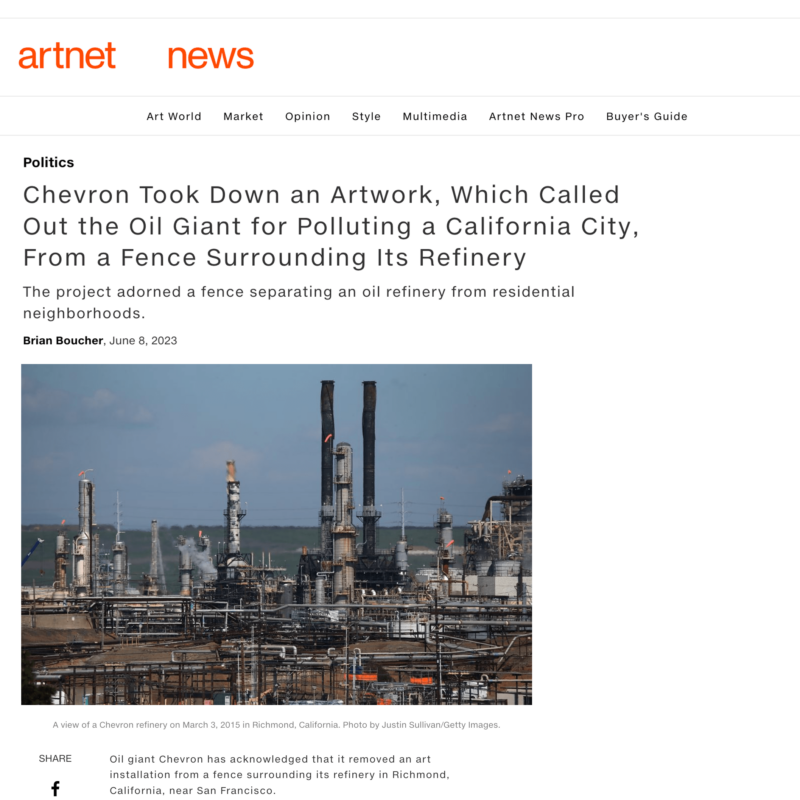
Weblink: https://news.artnet.com/art-world/chevron-removes-public-artwork-pollution-2317611 Artnet News Chevron Took Down an Artwork, Which Called Out the Oil Giant for Polluting a California City, From a Fence Surrounding Its Refinery The project adorned a fence separating an oil refinery from residential neighborhoods. Brian Boucher | June 8, 2023 Oil giant Chevron has acknowledged that it removed an art installation from a […]
ARTnews: ‘They’re Trying to Erase Us’: Chevron Takes Down Public Art Piece
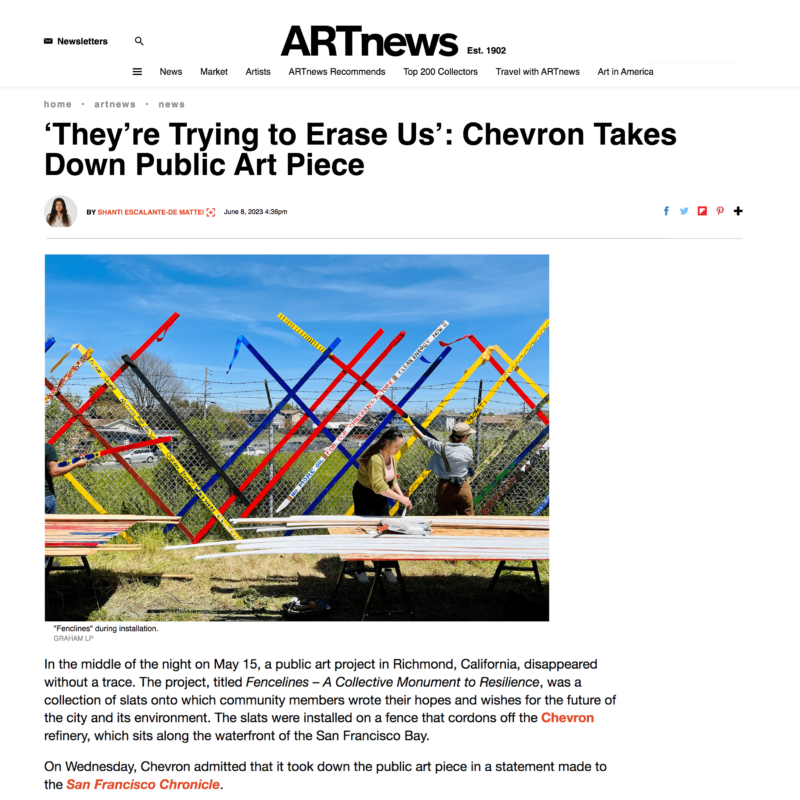
Weblink: https://www.artnews.com/art-news/news/chevron-takes-down-public-art-piece-fencelines-richmond-1234670880/ ARTnews ‘They’re Trying to Erase Us’: Chevron Takes Down Public Art Piece Michael Cabanatuan BY SHANTI ESCALANTE-DE MATTEI | June 8, 2023 4:36pm In the middle of the night on May 15, a public art project in Richmond, California, disappeared without a trace. The project, titled Fencelines – A Collective Monument to Resilience, was a collection […]
San Francisco Chronicle: Chevron admits it took down public art project that criticized the oil giant
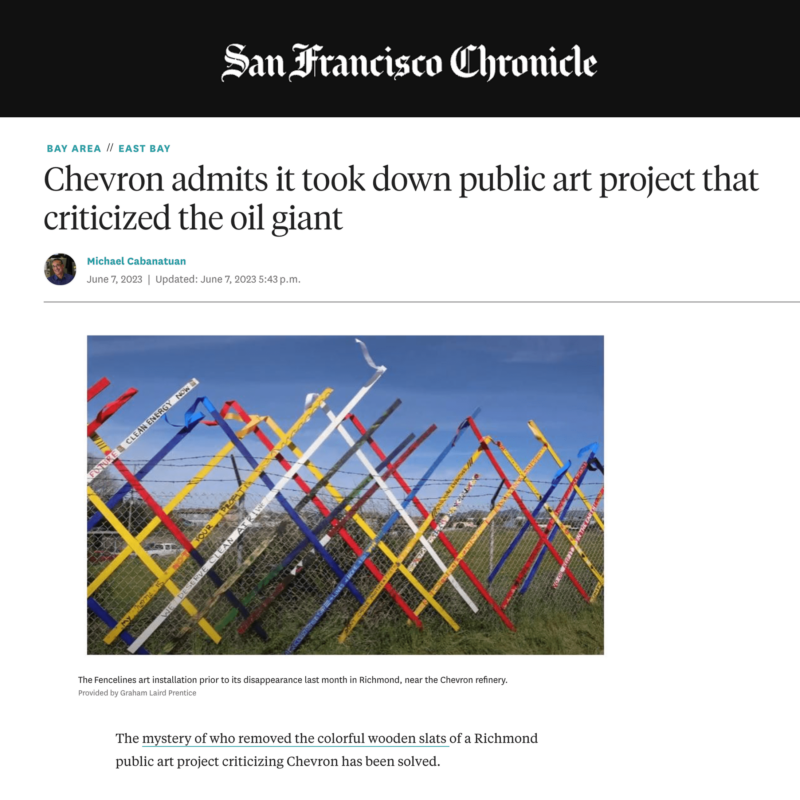
Weblink: https://www.sfchronicle.com/eastbay/article/chevron-admits-took-public-art-project-18140972.php San Francisco Chronicle Chevron admits it took down public art project that criticized the oil giant Michael Cabanatuan | June 7, 2023 The mystery of who removed the colorful wooden slats of a Richmond public art project criticizing Chevron has been solved. It was Chevron, a spokesman for the oil company admitted on Wednesday. Fencelines, […]
